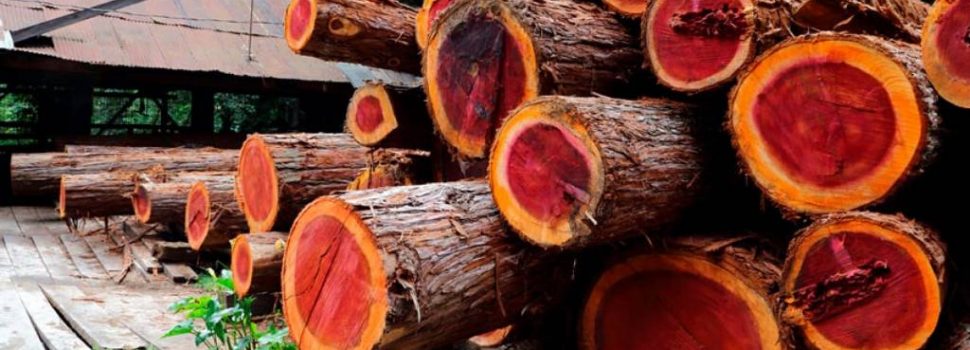
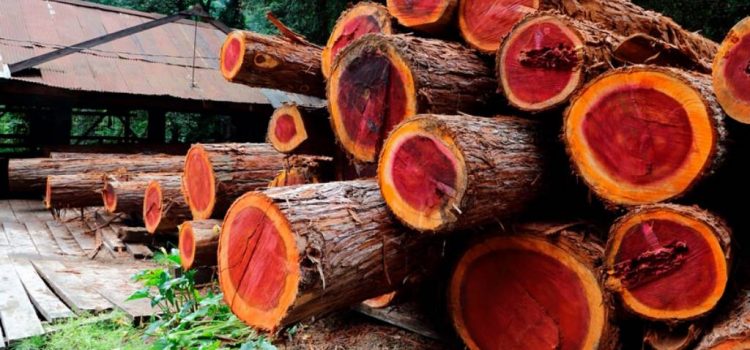
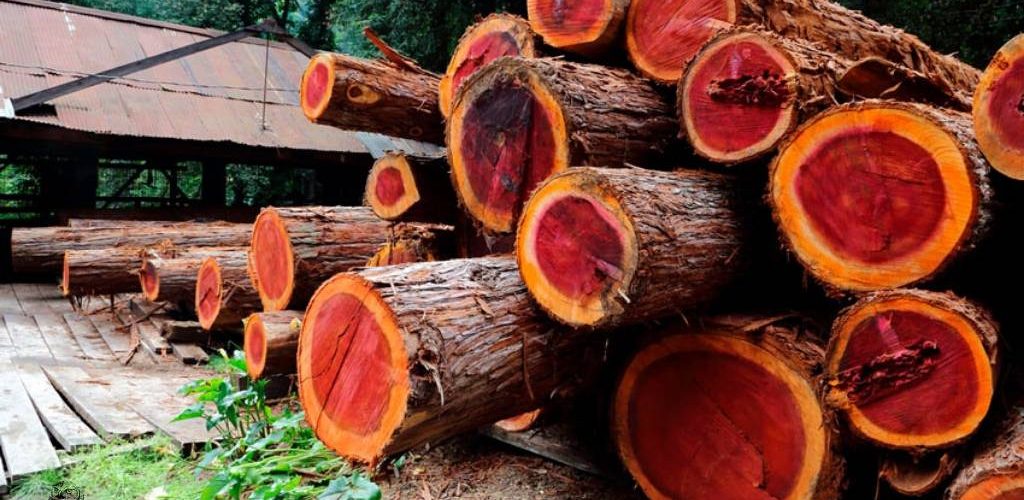
Everything about wood for carving
I’m often asked what kind of wood better to start with for beginner – soft or hard? Each type of wood is suitable for different techniques and projects. Remember that no matter what wood you choose your tools should always stay sharp to work well. Here are my suggestions on best leather strops that will help you keep your tools ready for work with any material.
Any log and plank that has been dried, without cracks and not rotten are valuable material, each of them has its advantages and disadvantages. To start learning wood carving it’s better to use soft wood: basswood, linden, aspen, poplar, alder, chestnut, cedar.
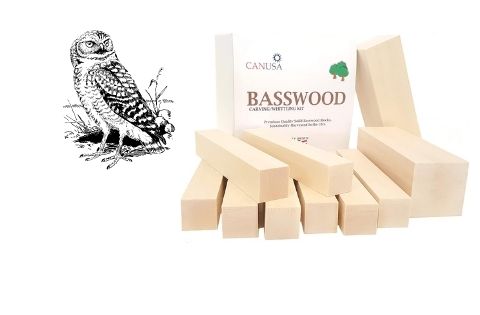
- CANUSA Wisconsin Basswood for Carving or Whittling, 10 Pcs.
- "Smooth and soft blocks for satisfying wood carving. 8 blocks measuring 1"" X 1"" square and 6 inches long. 2 blocks measuring 2"" x 2"" and 6 inches long."
- $14.99
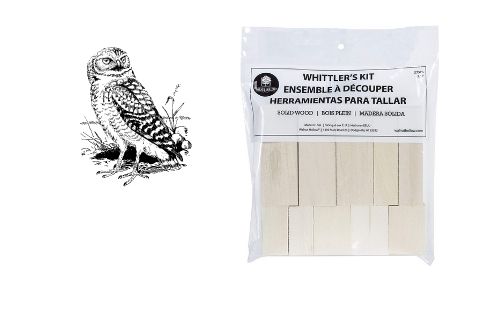
- Walnut Hollow Basswood Whittlers Carving Blocks, 10 Pcs
- Walnut Basswood Blocks is a different wood but still soft and nice to work with. Not the best quality, but really cheap.
- $9.99
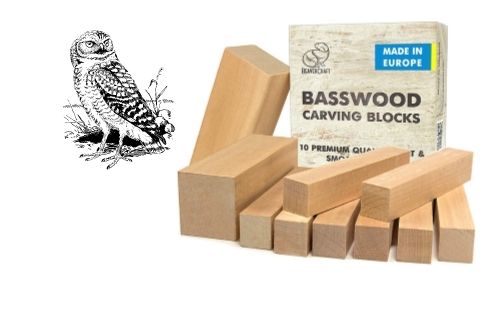
- BeaverCraft BW10 Basswood Carving Blocks Set, 10 Pcs
- BeaverCraft makes quality wood carving tools, same comes to wood. 10 wood pieces of a premium quality wood.
- Price not available
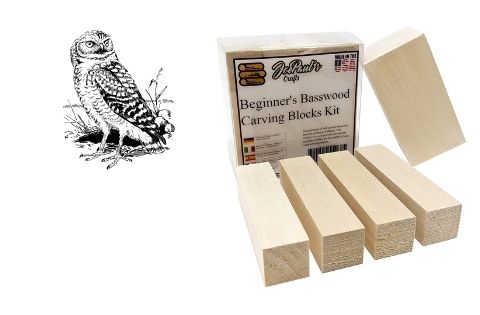
- Basswood - Beginner's Premium Carving Blocks Kit, 5 Pcs
- Only 5 blocks, not that much but good to go with if you only want to decide if wood carving is good for you.
- $10.99
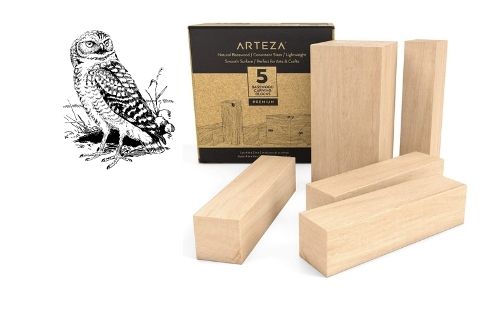
- ARTEZA Basswood Carving Blocks for Carving, Crafting and Whittling, 5 Pcs
- Arteza usually makes paints but this time they've come up with basswood blocks. 5 blocks of soft wood.
- $9.98
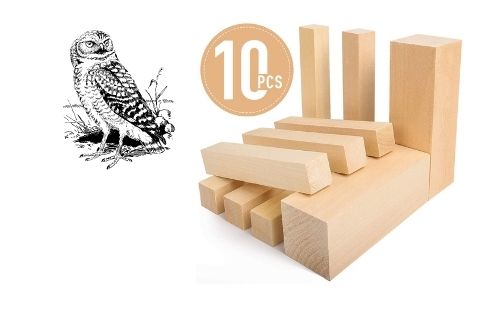
- Basswood Carving Blocks - 5ARTH Large, 10 PCs
- 5 large wood blocks. Perfect idea to go with if you want only to try wood carving.
- Price not available
They are easy to work with with a carving knife, it’s easier to get the shape, the grain. It is not that difficult to complete the final treatment. Also don’t forget that to get more creative with your projects you’ll need more tools than a knife. Here’s my advice on Best Wood Carving Chisel Set. Hard textured woods with clearly defined annual rings, despite the difficulty of processing, have their advantages: the products are beautiful without tinting, could be polished to shine, strong and durable.
I think it’s easy to identify the tree by the crown, leaves, bark, fruit conifers, etc. It’s also possible to identify the tree by it’s saw cut. The carver needs to know which of the wood is soft or hard, which textured or not. The texture of the wood also affects how easy or hard it will be to sand it to make it look perfect after carving. If you want to find out more about sandpaper, read my thoughts here – How to Choose Sandpaper for Your Wood Carving Projects?.
With this article, you will find out how to choose appropriate wood, how to carve it, and what the final result will appear. I will also add some nice wood blocks kits so you could choose from. And if you are looking at this article because someone you know likes carving or wants to take it up as a hobby and you need some ideas on gifts, I am happy to share – Christmas Gifts for a Woodcarver.
The Best Pick
BeaverCraft 10 Basswood Carving Blocks
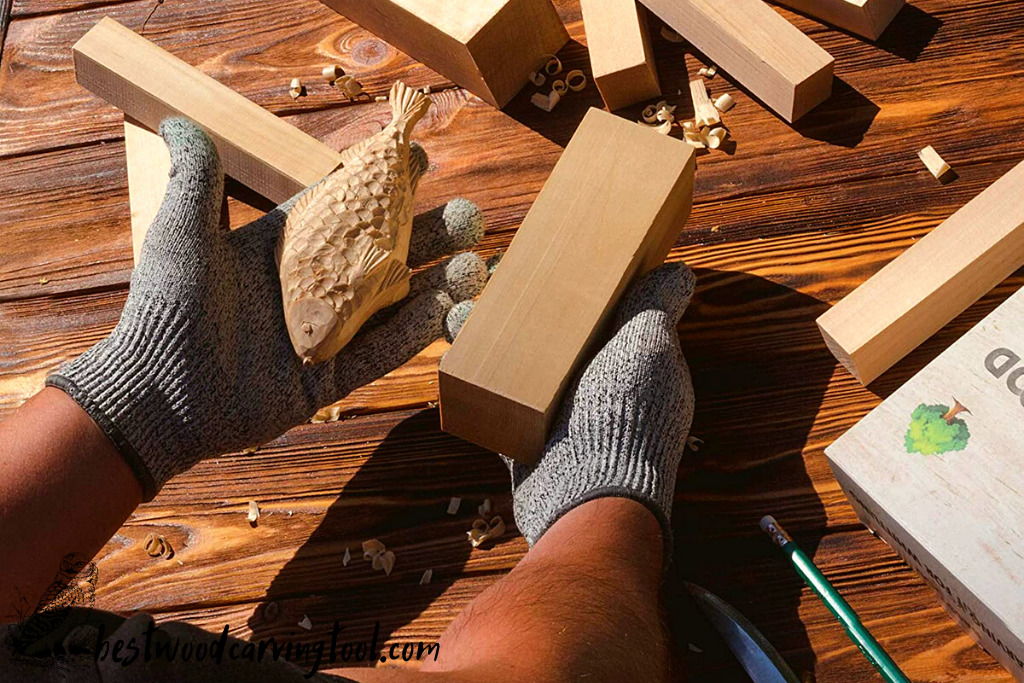
Basswood is easy to go with as it’s extremely soft and smooth. It doesn’t have any odor or chemical additives. So you can enjoy the whole process of wood carving without any troubles or issues. I usually buy BeaverCraft tools and enjoy carving with them. The same is with wood. 10 wood blocks of different sizes for 10 lovely whittling projects.
Linden or Limewood wood for carving
This wood is soft, monochrome, light, easy to be handled by a cutting tool. Widely used in folk traditional carvings, reliefs, ornaments, fine details and for statues of different sizes. The aspen is almost the same as the Linden by its characteristics. Talking about limewood that is also Linden I can tell that
It’s quite smooth and takes detailed pretty well. Despite this, after a few years of working with it, I found lime a bit stronger and harder. It still possible to make the well-polished finish of limewood, but regular linden is much better in this case.

Basswood for carving
Basswood is the best choice to start with for beginner wood carver. For a good reason, it has been used by generations of carvers since a long time ago. We price basswood for its perfect even grain. Exceptional stability is another priceless feature of this type of wood. It will forgive you a lot of newbie’s mistakes and will hold the wood stain as well. Personally I use it for whittling detailed miniatures and for relief carving.

Birchwood for carving (Bétula)
This type of wood is easy to split. Birch is a good choice for pickling and polishing. A lot of carvers found this wood usable in their projects. Its burls are regarded as a very peculiar and highly figured wood, prized for odd form and unicity. Working with the burl you can find unexpected artistic images thought.

Pine wood carving
Pine is soft, textured, easy to split wood. Personally, I don’t like to use it because of the great amount of thus. Also, it usually cracks too easily during the drying process. Looks very beautiful during polishing and in big wood carving statues creating. It shows well the layers after firing or etching with chemicals. Looks lovely in case of the symmetrical arrangement of annual rings, by the way, it applies to all textured wood.

Oak and ash wood for carving (Quércus, Fraxinus)
These types of wood have a similar structure and hardness. This high density and textured wood could be perfectly polished. Both of them are durable. Expressive in large works. Especially prized the so-called moraine oak, that has been stored in water for years.


Carving Alder wood (Álnus)
Alder is very common in the wood carving softwood. Alder is a slightly pinkish color. Very convenient for geometric carving and small details.

Apple and Pear for wood carving (Mālus, Pýrus)
The apple-tree, as well as the pear-tree wood, are pretty hard for carving. It’s very difficult to dry them out so that there are no cracks. But they’re good for small parts carving and easy to polish.

Maple wood for carving (hairewood)
Maple wood is very dense and tough. Its color is monochrome. This kind of wood is difficult to cut, but it is good for creating details. Maple is suitable for both miniature and large works.
It is used for musical instruments manufacturing, in the furniture industry, mechanical engineering.

Rowan wood carving (Mountain ash)
Rowan (Sorbus) wood is dense and strong, has a reddish-brown core with the wide light sapwood. It is often used in turnery, for creating small figures and polishing.

Larch wood for carving (Lárix)
Larch wood is quite tough and heavy, with pronounced layers, resistant to rotting, beautiful in treatment. I advise to use it for work without small details, and not to forget about good polishing.

Cedar or Swiss pine wood carving (Pínus sibírica)
The full name of this tree is Swiss or Korean cedar pine. It is similar to spruce, but more resistant to rotting. The wood is soft and carves well.
It is used in furniture manufacture, manufacture of pencils, decorative sculpture.

Yew for wood carving (Táxus)
The yew wood is dense, heavy, resistant to rotting and very durable. You can clearly see the year rings on it.
Perfect for polishing. It’s valued in the furniture industry for its beauty.

Cade wood for carving (Juniperus)
Cade mostly often grown as a shrub, while Tree form is less common. Its wood is layered, pink, with white broad sapwood and a pleasant smell. The layers are quite brittle.
The cade wood carving is usually used in mosaic works. I also recommend using it to create forms without small details, jewelry, and decorative sculpture.

Butternut wood for carving
Butternut tends to be one of the best choices for wood carving beginners. Usually, it has a light brown to golden color, but darker then basswood or aspen and grained well. Comparing to walnut it’s easier to carve and lighter. After polishing you will get a nice piece of wood that is why it’s usually used to create furniture. Working with the butternut be care of dozens of wormholes that are usually spread across this type of wood.

Walnut wood for carving
The walnut wood is beautiful due to its diverse coloring from grey to light brown. Despite its hardness, it could be well cut and polished. In industry, it is used for manufacturing furniture and veneer. The walnut reliefs and decorative sculptures look quite beautiful.

Beechwood in wood carving
The beech is a very strong, reddish-white, with numerous core beams wood. The material has good physical and mechanical properties, it is difficult to cut, but allows to create work with small details. It could be easily polished and stained. Beechwood is a reliable material, especially when hardness and precision are required.

Sandalwood for carving
The homeland of the sandalwood is India. The wood is monochrome, yellow in color, high density and finely structured, with a pleasant persistent smell. Using sandalwood it’s possible to achieve a high-quality result in carving small details. I recommend to use it for carving miniatures, small sculptures, and wooden jewelry. Relates to the category of valuable woods.

Boxwood wood for carving
Boxwood has a wide trunk very rarely and usually grows as a shrub. This tree is characterized by a very slow growth rate, e.g. the trunk diameter of a 60-year-old tree is only 10 cm. The wood is monotonous, has an ochre yellow color. Annual rings fit together tightly, are poorly visible, this gives the wood high density, hardness and strength, almost equal to the strength of the bone. It is used to create engraving boards, musical instruments, and small souvenirs. Boxwood is used by carvers to create miniature jewelry with small details, all kinds of reliefs and sculptures of small forms. The wood is perfect for polishing and tinting. Works of boxwood are highly valued. The tree is protected by the government – cutting is prohibited.

Conclusion
Do not forget that wood as a material is an integral part of the future masterpiece. The artistic level of the product extremely depends on the right wood type. It is possible to do the same work with different types, however, in the end, we will get completely different final results. The ability to choose the right material for the work is one of the key skills of a professional wood carver.

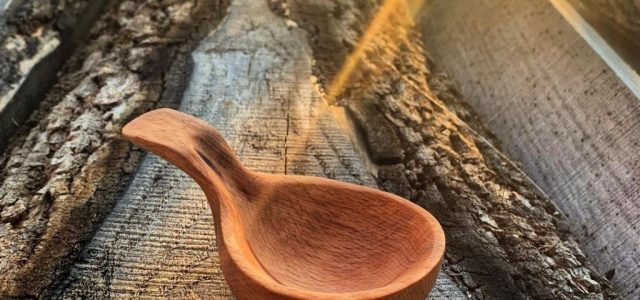
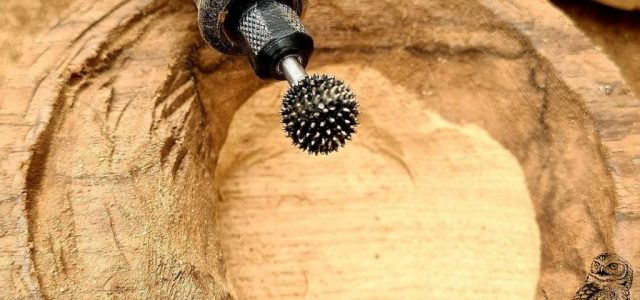
Peter
12.01.2021 #1 AuthorI’ve been told that using basswood tree lumber cut outside of January or February will result in wood that is not clear enough for my carving purposes. Is this true? Will the wood work better as a carving materials if I trim it during the summer months?
Steve
06.02.2021 #2 AuthorAfter much experimentation and research, I have found that the best time to cut a basswood tree is – whenever you can get to it! Basswood grows rapidly and from what I understand these trees are harvested two or three times
William
22.02.2021 #3 AuthorI’m struggling to find blocks of quality wood that are large enough. Should I glue smaller pieces together or will the end result be unsatisfactory?
Douglas
26.02.2021 #4 AuthorIf you are struggling to find a good block of wood, glue smaller pieces together. There’s no rule that says blocks have to be in one piece; in fact some people prefer an assembled block for its interesting texture and colour segregation caused by the different species of wood used. I too like working with assembled
Roy
13.03.2021 #5 AuthorI’m planning to build a piano stand for my digital keyboard. I’ve recently gotten into carving and would like to decorate the shelf and sides of the stand with hand-carved designs. Do you have any recommendations on what kind of wood I should use that is easy to carve but also durable?
Johnny
02.04.2021 #6 AuthorIf you’re new to carving then I wouldn’t recommend using anything from the rosewood family (any wood with an oil finish) because they are very dense and hard.
Harold
23.04.2021 #7 AuthorI purchased my basswood about four years ago. Our location in the northern Arizona desert provides very little humidity so it just continues to dry out. Is it possible that this wood could become overly hard, or are I not sharpening well enough?
Horacio
06.05.2021 #8 AuthorThis is a good question, and the answer has to do with the wood’s oil content. If you live in a very arid climate and humidity levels are low year-round, your basswood will benefit from being re-oiled now and then. The easiest way to accomplish this is by using a mineral